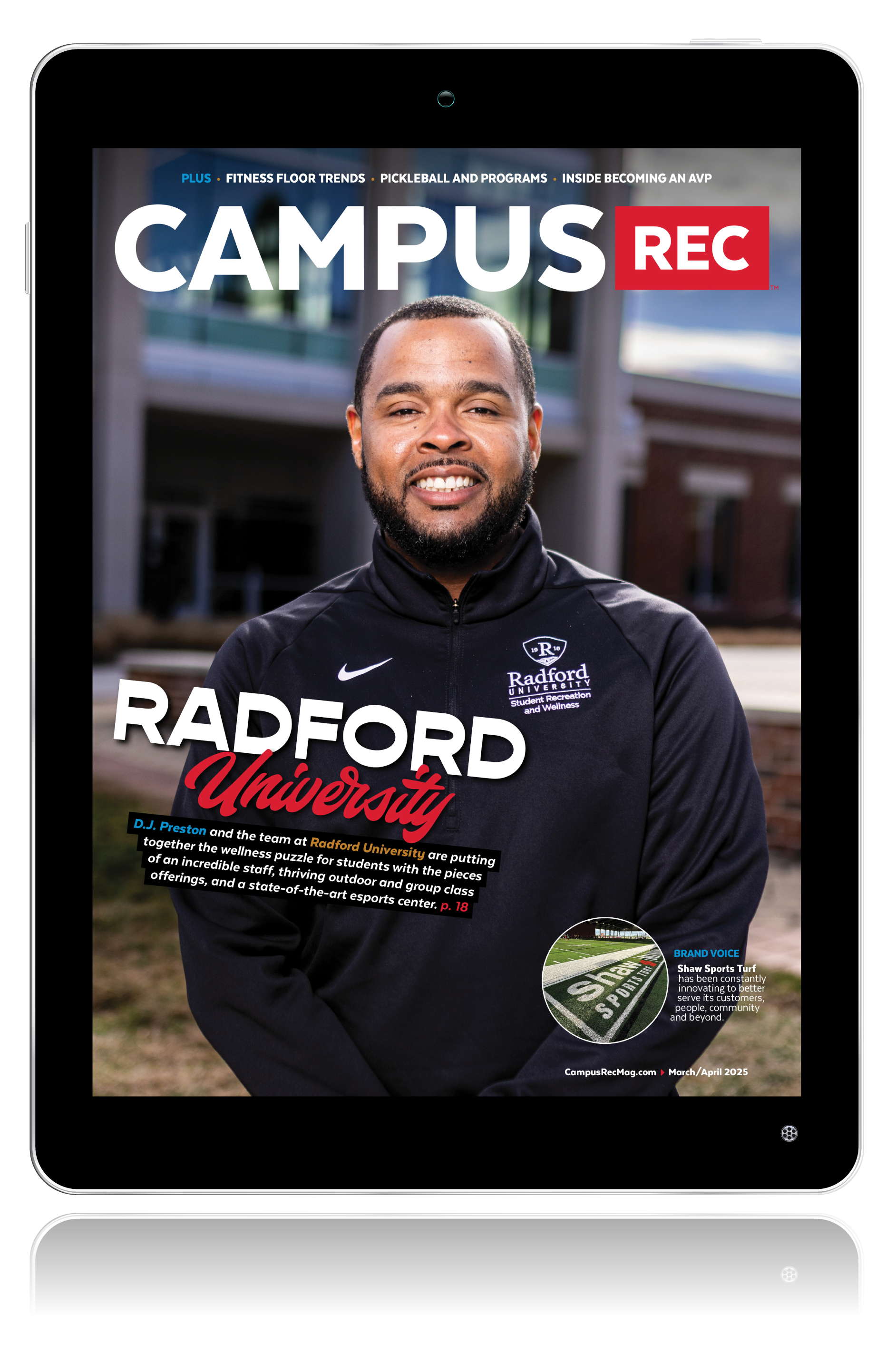In 1975, the administration at the University of Washington decided they could no longer tolerate students climbing the buildings on campus. As a solution they built the first climbing structure on a university property out of concrete and rocks. Known as Husky Rock, it still sits on the campus today. However, it is no longer the only climbing option at the university.
Today the university has a main gym with 22 top ropes and a bouldering area. In 2013, a squash court was converted into more climbing space. “I think it’s safe to say that there’s almost always a need for some sort of climbing facility on campus, and we’re almost outgrowing what we currently have,” said Garrett Genereux, the climbing coordinator with the recreational sports department. “And it’s always just trying to figure out what works best.”
With climbing growing in popularity and participation, what works best in terms of rock climbing equipment, staff and liability?
Step One: Equipment
Before students can begin climbing, the rec center needs the proper equipment. Boston University’s rock climbing facility was designed and built by Rockwerx in 2004. Timothy Moore, the executive director of physical education, recreation and dance, explained the wall is made of resinous, concrete-covered plywood panels over a light steel frame construction.
Andrew Deming, the assistant director of recreation at Drexel University, explained they enlisted Eldorado Climbing Walls to build the structure, now encased in a building with glass walls. “Anyone who is looking to build a new wall, I would absolutely suggest sticking with a flat, plywood paneled wall,” said Deming. “You can still cover it with metal mesh and stucco or concrete, so it still has texture, but really keep flat surfaces.”
In terms of gear, Deming advised looking for one-size-fits-all harnesses. He also said simplifying gear allows for an ease in managing all the equipment. Finally, having regular inspections of the wall and equipment can keep rec centers aware of equipment conditions.
Step Two: Staff
Once your gym is outfitted, you’ll need staff. “There is a trend right now toward the certification of climbing wall instructors,” said Deming. He explained that the American Mountain Guide Association (AMGA) is one of the largest certifying bodies in climbing. Although it’s not required, Deming, who is a provider of the Climbing Wall Instructing certification, said in such a high-risk environment, the certification process shows how much more training is involved than what you might find in a typical commercial gym.
According to Moore, training staff on aspects, like wall maintenance, should be ongoing. Training manuals help cover expectations, responsibilities, processes and procedures. Through in-service training, Moore said you can discuss current issues, program concerns and facility needs. “On-the-job training — supervisor to employee and peer instruction — is extremely important to keep the staff learning in the moment when skills and concepts have real meaning and immediate application,” he added.
Step Three: Liability
Of course, rock-climbing facilities also need to address liability issues. Safety should be the top priority. “Making sure that you have policies and protocols in place to first try to prevent any accidents from happening, then to making sure accidents will be responded to in the best way possible, and that your staff are trained and ready for that when that happens,” said Genereux.
When it comes to liability, Moore said to look at state laws and regulations, general aspects like fall zones and anchor positions, access and supervision. He said having policies and expectations when it comes to client orientation and education is helpful. Operational and risk management manuals are also key.
Finally, professional development is essential when it comes to reducing liability risks. Moore mentioned getting involved with professional organizations like AORE (Association of Outdoor Recreation and Education) and CWA (Climbing Wall Association) to stay current on issues and practices.
But none of this will matter if the student population at a university is not educated about climbing. Genereux said it’s key to instruct students by offering the best classes possible in order to help climbing thrive. “I think it’s important to have those educational pieces, and the sport continues to grow and people become more and more interested in what the sport actually is and how to do it,” he said.










